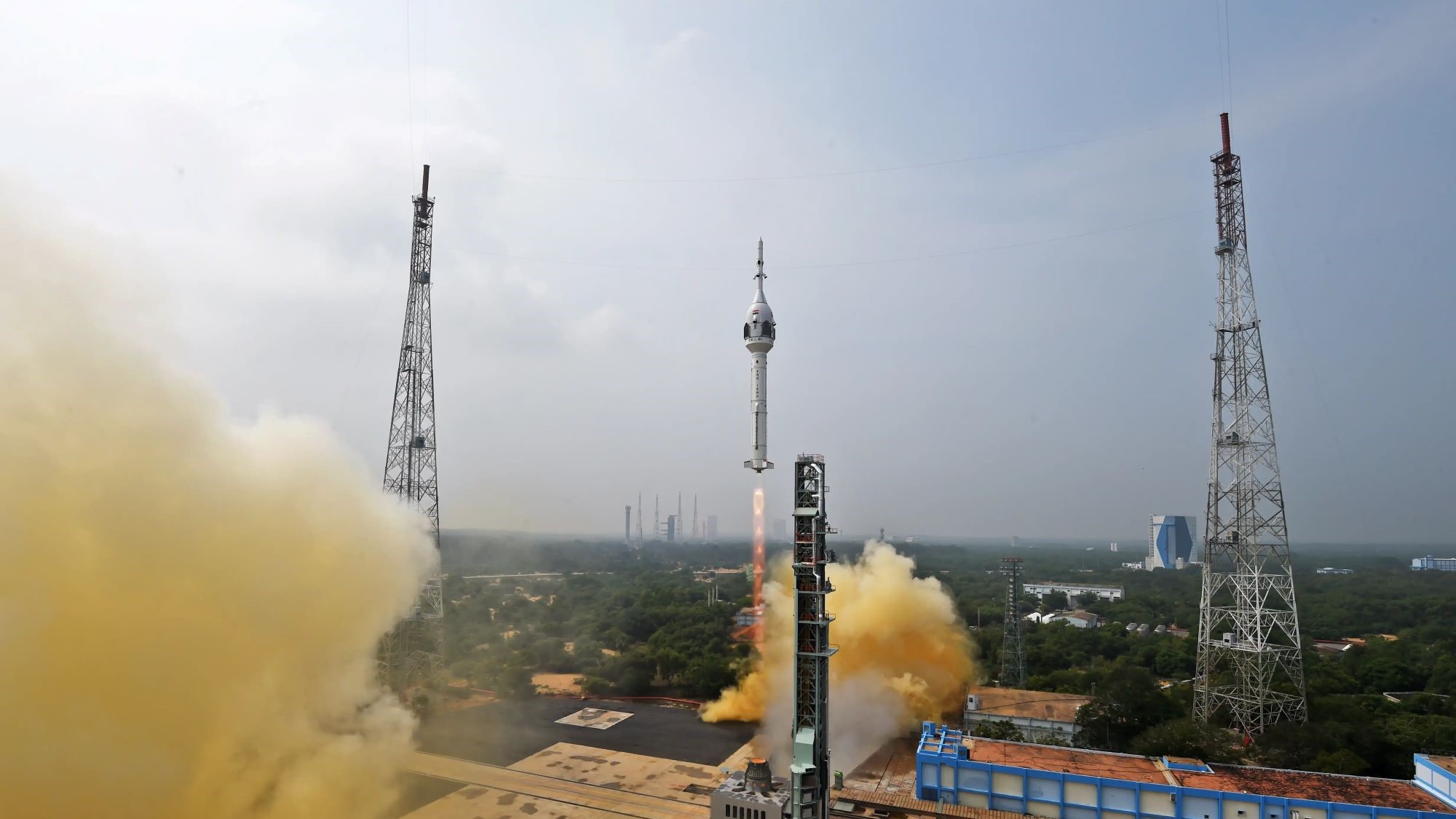

The Indian Space Research Organization, or ISRO, is on a roll. India’s national space agency accomplished the first ever landing of a spacecraft, the Vikram lander, near the lunar south pole on August 23. On September 2, ISRO launched Aditya-L1, the agency’s first solar probe.
And on October 21, ISRO completed a successful launch abort system test for the Gaganyaan, a spacecraft India hopes will carry three national astronauts around Earth on an orbital mission by 2026. That’s an ambitious leap from uncrewed space missions, but if India succeeds, it will join a club of just three other nations that have sent their own astronauts and craft to space—Russia, the US, and China.
“India is the most impressive, exciting space story of the year,” says Rich Cooper, vice president of communications and outreach for the Space Foundation, a nonprofit that promotes space industry and exploration. “In a year full of a lot of accomplishments, India has more than put itself on the map.”
India’s space program goes back decades. ISRO launched its first satellite, Rohini-1, into orbit on a rocket of Indian manufacture in 1980. The agency became known for launching satellites, and later more distant space missions—such as the Mangalyaan Mars orbiter launched in 2013—under disciplined budgets. ISRO also plans to send an orbiter to Venus in 2025, and a second Mars orbiter to the Red Planet in 2024.
[Related: Meet the first 4 astronauts of the ‘Artemis Generation’]
“The Indian space program has been under the radar, I think, because it has always operated well, but with lower stakes and lower budget,” says Laura Forczyk, a space industry analyst and founder of the consultancy company Astralytical. But IRSO’s ambitions are clearly and justifiably ramping up in the wake of the Vikram landing, she says, as “successfully landing a lander and a rover on the moon is something that very few countries in the world have ever done.”
And even those countries that have done it before sometimes stumble: in 1957 Russia placed the first satellite, Sputnik, in orbit, and four years later sent the first human, Yuri Gagarin, to space. But in 2023, around the same time India was celebrating the Vikram success, Russia failed to make a soft landing on the moon with its Luna 25 mission.
India’s progress hasn’t been in a vacuum—it’s been studying the successes and failures of Russia, US, and China’s space programs since the beginning, according to Cooper. “There are 60-plus years of human spaceflight lessons to learn, and India has been a marvelous student at looking at those lessons,” he says. “They more than did their homework.”
The Gaganyaan program plans to proceed similarly to NASA’s Artemis program, with multiple system and spacecraft tests before the first human climbs aboard a rocket. The first uncrewed test flight, Gaganyaan 1, is scheduled for sometime in 2024, and a second Gaganyaan 2, is scheduled for 2025.
[Related: Why do all these countries want to go to the moon right now?]
Gaganyaan 3, in 2026, aims to put a trio of Indian astronauts in orbit around Earth for three days. From there, ISRO hopes to build a space station by 2035, and send Indian astronauts to the moon by 2040. That’s a familiar expansion method, according to University of North Dakota space studies professor Michael Dodge, as it was proposed by Werner von Braun, the Nazi rocket scientist who became the architect of NASA’s Apollo program. “This is a strategy that has been around for a very long time, historically speaking, and it looks like India is pursuing that in a very sort of systematic way,” Dodge says.
Whether India’s timeline for growing its space program will hold is another question. Forczyk notes that Gaganyaan 1 was supposed to launch in 2020, but faced delays both from COVID-19 and those typical of a complicated human spaceflight program. It may take ISRO more time and money than they expect, and she thinks the launch of Gaganyaan 1 will likely slip into 2025.
But a crewed mission by 2026? “I think that’s completely feasible,” Forczyk says. As Russia’s influence wanes, and that of India’s close rival China’s rises, the crewed Gaganyaan program is “a means of growing their own standing in the world.”
Dodge notes that national prestige has always been a part of space exploration, going back to the original space race between the US and the Soviet Union. But that prestige is about two things, “One of them is technological prowess, and being able to demonstrate to the world that you were among the elite, and your capability to use and explore space,” he says. ”But the other is a geopolitical overlay.”
What excites Forczyk about ISRO’s plans, in contrast to India’s anti-satellite missile test in 2019, is that they are a peaceful way for India to cultivate national and geopolitical prestige. The success of the Indian civilian space program can serve as a model for other nations as they make their own bids to become space powers in the 21st century.
“What we’re going to see is more countries that have historically not played a large role in space rise, because they see it as a means of demonstrating their technology, technological advancement,” Forczyk says. “A peaceful demonstration of advancement.”
